�
27th February 2008 - New research
THE WORLD'S HIGHEST INCIDENCE OF PARKINSON'S
DISEASE
Acta Neurologica Scandinavica [2008] Feb 18;
[Epub ahead of print] (Wermuth L, Bech S, Skaalum Petersen M, Joensen P,
Weihe P, Grandjean P.)
Complete abstract
New research has shown that the world's highest incidence of Parkinson's
Disease is in The Faroe Islands, the Danish owned islands north of the
British Isles. For more on the Faeroe Islands go to
Faeroe Islands.
 The
average
annual
incidence of Parkinson's Disease has been found to be 21.1 per 100,000
people. This means that people are
being diagnosed with Parkinson's Disease at a
faster rate in the Faeroe Islands than anywhere else in the world. The
prevalence, which is the number of people that already have Parkinson's
Disease is, at 206.7 per 100,000, also one of the highest in the world.�
This is greater than it was in previous years. Fishing forms most of the
Faeroes economy, and fish is very prominent in their diet. The cause of
the high prevalence is unknown, but it has been suggested that neurotoxic
contaminants in traditional food may play a role in the pathogenesis in
this population, perhaps jointly with genetic predisposition.
The
average
annual
incidence of Parkinson's Disease has been found to be 21.1 per 100,000
people. This means that people are
being diagnosed with Parkinson's Disease at a
faster rate in the Faeroe Islands than anywhere else in the world. The
prevalence, which is the number of people that already have Parkinson's
Disease is, at 206.7 per 100,000, also one of the highest in the world.�
This is greater than it was in previous years. Fishing forms most of the
Faeroes economy, and fish is very prominent in their diet. The cause of
the high prevalence is unknown, but it has been suggested that neurotoxic
contaminants in traditional food may play a role in the pathogenesis in
this population, perhaps jointly with genetic predisposition.
�
26th February 2008 - New research
ROTIGOTINE PATCH - CLINICAL TRIAL RESULTS
Movement Disorders [2007] 22 (16) : 2398-2404
(Giladi N, Boroojerdi B, Korczyn AD, Burn DJ, Clarke CE, Schapira AH;
SP513 investigators)
Complete abstract
Rotigotine, which is marketed as Neupro, is a
dopamine agonist formulated in a transdermal delivery system. For more
information go to
Neupro.
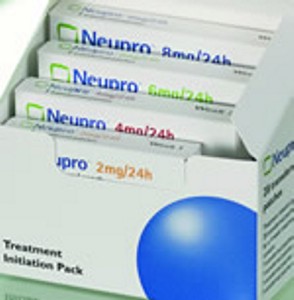 The present
study was to investigate the efficacy and safety of the rotigotine transdermal
patch in the treatment of early Parkinson's disease. Its effect was
compared to the use of a placebo or ropinirole. Transdermal rotigotine at
doses less or equal to 8 mg/day were not inferior to ropinirole at doses
less or equal to 24 mg/day. Transdermal rotigotine at doses less or equal
to 8 mg/day had a similar efficacy to ropinirole at doses less or equal to
12 mg/day. The rotigotine transdermal patch was well tolerated. The most
common adverse events were reactions at the site of the application of the
patch, nausea, and somnolence. Reactions at the application site were
predominantly mild or moderate in intensity.
The present
study was to investigate the efficacy and safety of the rotigotine transdermal
patch in the treatment of early Parkinson's disease. Its effect was
compared to the use of a placebo or ropinirole. Transdermal rotigotine at
doses less or equal to 8 mg/day were not inferior to ropinirole at doses
less or equal to 24 mg/day. Transdermal rotigotine at doses less or equal
to 8 mg/day had a similar efficacy to ropinirole at doses less or equal to
12 mg/day. The rotigotine transdermal patch was well tolerated. The most
common adverse events were reactions at the site of the application of the
patch, nausea, and somnolence. Reactions at the application site were
predominantly mild or moderate in intensity.
�
25th February 2008 - New book
Parkinson's Disease
in focus
Charles Tugwell
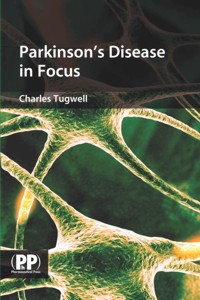 Publisher's description : Parkinson's Disease
in Focus is a resource for pharmacists and other healthcare practitioners
who are involved with patients. It is aimed at being helpful to students
of pharmacy and medicine, and to patients and those who care for them. The
book provides a framework for medical practice, with a particular focus on
drug therapy management. Developments in research of new treatments such
as gene therapy are also discussed. Chapter contents include : The
condition and its symptoms, Pharmacotherapy, Non-drug treatments,
Complementary therapies, Surgical options, Symptom management not
specific to Parkinson's disease, Development and future treatments, drug interactions and adverse effects.
Click here for more details�
Publisher's description : Parkinson's Disease
in Focus is a resource for pharmacists and other healthcare practitioners
who are involved with patients. It is aimed at being helpful to students
of pharmacy and medicine, and to patients and those who care for them. The
book provides a framework for medical practice, with a particular focus on
drug therapy management. Developments in research of new treatments such
as gene therapy are also discussed. Chapter contents include : The
condition and its symptoms, Pharmacotherapy, Non-drug treatments,
Complementary therapies, Surgical options, Symptom management not
specific to Parkinson's disease, Development and future treatments, drug interactions and adverse effects.
Click here for more details�
������������������������������������������������������������������������������������������������������������������������������������������������
24th February 2008 - New research
DBS SURGERY TREATS DYSTONIA
Neuroscience. 2008 Jan 9; [Epub ahead of
print] (Magarinos-Ascone CM, Regidor I, Gomez-Galan M, Cabanes-Martinez L,
Figueiras-Mendez R.)
Complete abstract
Dystonia is sustained muscle contractions that cause twisting and repetitive
movements or abnormal postures. It often occurs alongside Parkinson's
Disease. Deep brain stimulation (DBS) was applied in the internal segment
of the
globus
pallidus (GPi) to treat dystonia.
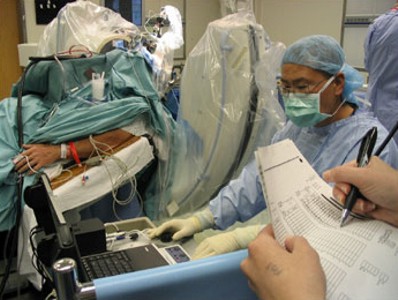 DBS is a surgical method that
uses
electrodes implanted into the brain.
For more information go to
Deep Brain Stimulation.
One year after surgery the dystonia movement
scores were significantly lower than before surgery. Two years after
surgery the dystonia movements had decreased by two thirds. The high
activity of the muscle cells at rest was found to diminish to very low
levels, allowing an ease of voluntary contractions.� The authors
claim that the results suggest that DBS in the GPi is a reliable surgical
technique for dystonia.
DBS is a surgical method that
uses
electrodes implanted into the brain.
For more information go to
Deep Brain Stimulation.
One year after surgery the dystonia movement
scores were significantly lower than before surgery. Two years after
surgery the dystonia movements had decreased by two thirds. The high
activity of the muscle cells at rest was found to diminish to very low
levels, allowing an ease of voluntary contractions.� The authors
claim that the results suggest that DBS in the GPi is a reliable surgical
technique for dystonia.
�
23rd February 2008 - New research
THE RISK OF FALLING IN PARKINSON'S DISEASE
The Journal of Neuroscience Nursing [2007] 39
(6) : 336-341 (Sadowski CA, Jones CA, Gordon B, Feeny DH.)
Complete abstract
This study examined awareness of the risk
factors for falling among patients with Parkinson disease using the Falls
Risk Awareness Questionnaire (FRAQ). A survey of patients who attended a
Movement Disorders
Clinic
for treatment of Parkinson's Disease was used.
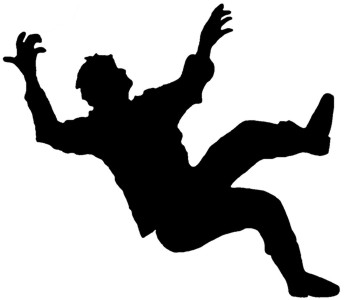 FRAQ is a 28-item
self-administered survey that assesses the
knowledge and perception of risk factors for
falling.� 82% of the participants reported falls in the past.�
30% of participants had fallen within the past month. 68% of the
participants felt they were at risk for further falls. When asked to list
potential risk factors for falling, only 14% could identify medication as
a risk factor. People with Parkinson's Disease are at substantial risk of
falling, yet many appear to be unaware of common risk factors, especially
medication use.
FRAQ is a 28-item
self-administered survey that assesses the
knowledge and perception of risk factors for
falling.� 82% of the participants reported falls in the past.�
30% of participants had fallen within the past month. 68% of the
participants felt they were at risk for further falls. When asked to list
potential risk factors for falling, only 14% could identify medication as
a risk factor. People with Parkinson's Disease are at substantial risk of
falling, yet many appear to be unaware of common risk factors, especially
medication use.
�
22nd February 2008 - New research
ROPINIROLE V L-DOPA
Movement Disorders [2007] 22 (16) : 2409-2417
(Hauser RA, Rascol O, Korczyn AD, Jon Stoessl A, Watts RL, Poewe W, De
Deyn PP, Lang AE.)
Complete abstract
In a 5-year study, people with Parkinson's
disease were divided between those given ropinirole, a dopamine agonist
also known as Requip, and those given L-dopa. Those initially treated with
ropinirole had a significantly lower incidence of dyskinesia compared with
those who started with L-dopa. However, scores on the UPDRS (the main test
for Parkinson's Disease), movement scores were significantly more improved
in those given L-dopa. This was
extended
to a ten year study.�
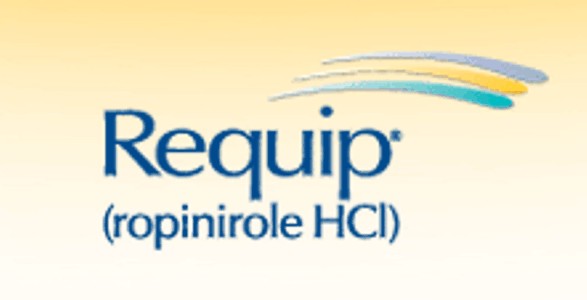 The incidence of dyskinesia after ten years was
still significantly lower in those taking
ropinirole.
The time taken to develop dyskinesia was
longer in those taking ropinirole.� The incidence of at least
moderate wearing off of effect was significantly lower in those taking
ropinirole. Over ten years there were no significant differences in change
in symptoms, scores concerning daily living or movement, or scores
concerning quality of life, clinical impression, or sleepiness.
The incidence of dyskinesia after ten years was
still significantly lower in those taking
ropinirole.
The time taken to develop dyskinesia was
longer in those taking ropinirole.� The incidence of at least
moderate wearing off of effect was significantly lower in those taking
ropinirole. Over ten years there were no significant differences in change
in symptoms, scores concerning daily living or movement, or scores
concerning quality of life, clinical impression, or sleepiness.
�
21st February 2008 - New research
THE PREVALENCE AND TREATMENT OF DYSKINESIA
Journal of Neural Transmission [2007] 114 (8)
: 1023-1026 (Muller T, Woitalla D, Russ H, Hock K, Haeger DA.)
Complete abstract
Dyskinesia is involuntary physical movement,
that is often caused by the excessive effects of dopaminergic drugs such
as L-dopa. A study into the prevalence and treatment of dyskinesia in
Parkinson's Disease patients was
performed with 380 Parkinson's Disease
specialists interviews relating to Parkinson's Disease, and 1,900
retrospectively
completed patient
record forms for patients with dyskinesia.
 Physicians reported that 34% of their Parkinson's Disease patients
experience dyskinesia, and that 20% of
patients with Parkinson's Disease were affected by
moderately-to-completely disabling dyskinesia. Treatment of dyskinesia was
looked upon by the physicians as unsatisfactory. Different methods of
treating dyskinesia are being examined. However, dividing up the L-dopa
dosage is presently the first choice means of treating dyskinesia.
Physicians reported that 34% of their Parkinson's Disease patients
experience dyskinesia, and that 20% of
patients with Parkinson's Disease were affected by
moderately-to-completely disabling dyskinesia. Treatment of dyskinesia was
looked upon by the physicians as unsatisfactory. Different methods of
treating dyskinesia are being examined. However, dividing up the L-dopa
dosage is presently the first choice means of treating dyskinesia.
�
20th February 2008 - News report
MAO-B LEVELS INCLINE PEOPLE TO PARKINSON'S DISEASE
A new study showed that high levels of MAO-B
cause Parkinson's Disease symptoms.� MAO-B is a naturally occurring
chemical in the body that is responsible for breaking down several
substances such as dopamine, whose deficiency causes Parkinson's Disease.
For more information go to
MAO-B. Scientists at the
Buck Institute for Age Research, raise the possibility that humans could
be tested for high MAO-B levels to see if they have this risk factor
for
Parkinson's Disease.
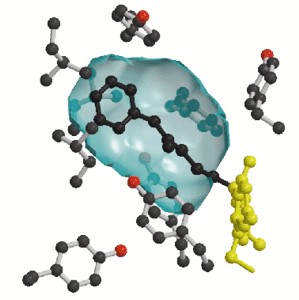 The study appears in the February 20 issue of the
open-access, online journal, PLoS ONE. Levels of MAO-B vary 50-fold in
humans and tend to increase with age. Several studies have suggested that
increases in MAO-B contribute to the development of Parkinson's Disease,
but direct proof of a contributory role for MAO-B has been lacking. Tests
to measure levels of MAO-B are not currently available to the general
public. Researchers suggest that MAO-B testing could be akin to current
practices involving cholesterol, but add that "the fact that someone has
high levels of MAO-B does not necessarily mean they are fated to develop
Parkinson's Disease." For more information go to
the
Complete article.
The study appears in the February 20 issue of the
open-access, online journal, PLoS ONE. Levels of MAO-B vary 50-fold in
humans and tend to increase with age. Several studies have suggested that
increases in MAO-B contribute to the development of Parkinson's Disease,
but direct proof of a contributory role for MAO-B has been lacking. Tests
to measure levels of MAO-B are not currently available to the general
public. Researchers suggest that MAO-B testing could be akin to current
practices involving cholesterol, but add that "the fact that someone has
high levels of MAO-B does not necessarily mean they are fated to develop
Parkinson's Disease." For more information go to
the
Complete article.
�
19th February 2008 - New clinical trial
CONTROLLING EXCESSIVE SALIVA IN PARKINSON'S
DISEASE
NeuroHealing Pharmaceuticals have initiated
Phase II Clinical Trials of NH004 for Sialorrhea in Parkinson's Disease.
Sialorrhea (drooling or uncontrolled salivation from the salivary glands)
is often described as the single most disabling social problem for many
people with Parkinson's Disease, and affects up to 75% of patients with
advanced Parkinson's Disease. Depending on
its
degree, drooling can result in social and medical disability, impaired
speech, or serious feeding difficulties.
 Unable to manage oral secretions,
affected persons are at an increased risk of aspiration pneumonia, skin
maceration, and infection. NH004 is an intra-oral, slow-dissolving film
containing a fast acting anticholinergic agent to control the symptoms of
sialorrhea. The drug is embedded in a muco-adhesive film that is placed in
the mouth and provides a slow, localized delivery of the medication while
minimizing systemic exposure to the drug. The film design makes it
suitable for unobtrusive use in a social environment. For more information go to
the
Complete article.
Unable to manage oral secretions,
affected persons are at an increased risk of aspiration pneumonia, skin
maceration, and infection. NH004 is an intra-oral, slow-dissolving film
containing a fast acting anticholinergic agent to control the symptoms of
sialorrhea. The drug is embedded in a muco-adhesive film that is placed in
the mouth and provides a slow, localized delivery of the medication while
minimizing systemic exposure to the drug. The film design makes it
suitable for unobtrusive use in a social environment. For more information go to
the
Complete article.
�
18th February 2008 - New research
MENTAL HEALTH PROBLEMS INCREASE BEFORE AND
AFTER DIAGNOSIS
Neuroepidemiology [2008] 30 (2) : 71-75 (Leentjens
AF, Driessen G, Weber W, Drukker M, van Os J.)
Complete abstract
Parkinson's disease is often, but not always,
accompanied by a deterioration in mental health. It has been found that
mental health problems start increasing up to three years prior to
diagnosis, before Parkinson's Disease is even
evident. Researchers suggest that this
deterioration could be an early indicator of forthcoming Parkinson's
Disease.
 This
coincidence of medical disorders may be due to reduced dopamine being
common to both Parkinson's Disease and depression. However, about two
years after diagnosis, mental health problems actually tend to decline.
This is odd given that dopamine levels tend to decrease even further after
diagnosis. It might possibly be explained by the fact that most people
start taking dopamine increasing drugs. This increase in mental health
problems prior to and after diagnosis is greater for women than for men,
and also for younger rather than older individuals.
This
coincidence of medical disorders may be due to reduced dopamine being
common to both Parkinson's Disease and depression. However, about two
years after diagnosis, mental health problems actually tend to decline.
This is odd given that dopamine levels tend to decrease even further after
diagnosis. It might possibly be explained by the fact that most people
start taking dopamine increasing drugs. This increase in mental health
problems prior to and after diagnosis is greater for women than for men,
and also for younger rather than older individuals.
�
17th February 2008 - News report
LIBRA DBS SYSTEM - A NEW DEVICE FOR
PARKINSON'S DISEASE
The University of Rochester Medical Center (URMC)
is one of the sites testing a new device for patients with Parkinson�s
disease and Essential Tremor. The study will help determine whether the
Libra DBS system - a new and improved form of Deep Brain Stimulation (DBS)
technology - is effective in providing relief for patients who are unable
to adequately control their symptoms. The manufacturers already produce
other neuromodulation products.
For
more information go
to
Advanced Modulation Systems.
 The DBS system is a surgically implanted
medical device that delivers an electrical stimulation to areas of the
brain that control movement. The system consists of a neurostimulator � a
pocket-watch-sized device that is implanted under the collarbone � and
wires, or leads, which run from the neurostimulator under the skin and
into the brain through an opening in the skull. The leads are surgically
guided to one of two areas in the brain depending upon the patient and the
condition being treated. For more information go to
the
Complete article.
The DBS system is a surgically implanted
medical device that delivers an electrical stimulation to areas of the
brain that control movement. The system consists of a neurostimulator � a
pocket-watch-sized device that is implanted under the collarbone � and
wires, or leads, which run from the neurostimulator under the skin and
into the brain through an opening in the skull. The leads are surgically
guided to one of two areas in the brain depending upon the patient and the
condition being treated. For more information go to
the
Complete article.
�
14th February 2008 - New research
LEWY BODIES PRECEDE PARKINSON'S DISEASE
Acta Neuropathologica [2008] Feb 9; [Epub
ahead of print] (Dickson DW, Fujishiro H, Delledonne A, Menke J, Ahmed Z,
Klos KJ, Josephs KA, Frigerio R, Burnett M, Parisi JE, Ahlskog JE.)
Complete abstract
������������������������������������������������������������������������������������������������������������������������������������������������������������������������������
Lewy bodies are often a cellular symptom of Parkinson's Disease and some
other neurological disorders.
For more information go to
Lewy body. Lewy bodies are basically rubbish bins that get rid of�
damaged elements from brain cells. However,
Lewy bodies are also detected in the brains
of about 10% of people over the age of 60 that do not have Parkinson's
Disease or any other neurological disorder. When Lewy bodies are found in
normal individuals, the process is sometimes referred to as incidental
Lewy body disease (iLBD). The distribution of
Lewy bodies in
healthy individuals is similar to that found
in people
with Parkinson's Disease.
 It remained unknown
as to whether
Lewy
bodies under these circumstances were merely part of ageing, or indicated
that somebody was going to develop Parkinson's Disease. Researchers
findings suggest that Lewy bodies in healthy individuals (iLBD) is
preclinical Parkinson's Disease and that the lack of symptoms in these
people is solely due to the threshold for symptoms not quite being
reached. Along with other studies, this means that virtually all symptoms,
cellular and physical, are occurring and developing well before it is
realised that somebody has Parkinson's Disease, and that cell damage is
already taking place before diagnosis.
It remained unknown
as to whether
Lewy
bodies under these circumstances were merely part of ageing, or indicated
that somebody was going to develop Parkinson's Disease. Researchers
findings suggest that Lewy bodies in healthy individuals (iLBD) is
preclinical Parkinson's Disease and that the lack of symptoms in these
people is solely due to the threshold for symptoms not quite being
reached. Along with other studies, this means that virtually all symptoms,
cellular and physical, are occurring and developing well before it is
realised that somebody has Parkinson's Disease, and that cell damage is
already taking place before diagnosis.
�
13th February 2008 - News report
STEM CELL SURGERY NOW USED INTERNATIONALLY
There are now clinics with stem cell therapy
facilities in the Dominican Republic, Cuba, China, Russia, Singapore,
Thailand, India and Germany. Many of them use foetus stem cells, umbilical
cord cells and adult stem cells. According to Dr Abraham, Director of
Nichi-in Center for Regenerative Medicine, stem cell therapy does cure
liver cirrhosis and spinal cord injury
provided the patient is young and the level of injury is low. He suggests
that stem
cell therapy was a real boon to patients with
spinal cord injury, liver cirrhosis, peripheral vascular diseases and
ischaemic
heart diseases.
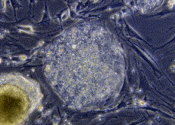 �Multi-centric study of stem cell application in these
disorders have proven the safety in all and efficacy in a select group of
patients, who otherwise have no other option for treatment�. However,
nobody undergoing stem cell surgery for Parkinson's Disease has ever been
cured of it. All patients undergoing stem cell surgery have returned home
with Parkinson's Disease and still have to be treated for Parkinson's
Disease.�What benefits some medical disorders is frequently not of any use
in others. For more information go to
the
Complete article.
�Multi-centric study of stem cell application in these
disorders have proven the safety in all and efficacy in a select group of
patients, who otherwise have no other option for treatment�. However,
nobody undergoing stem cell surgery for Parkinson's Disease has ever been
cured of it. All patients undergoing stem cell surgery have returned home
with Parkinson's Disease and still have to be treated for Parkinson's
Disease.�What benefits some medical disorders is frequently not of any use
in others. For more information go to
the
Complete article.
�
12th February 2008 - News report
ELECTRIC ACUPUNCTURE FOR PARKINSON'S DISEASE
Two American physicians have unveiled a
machine that they claim could dramatically improve the life of people with
Parkinson�s disease. It's a device that sends small electrical currents
into the hands and feet of patients - a bit like acupuncture or
acupressure.
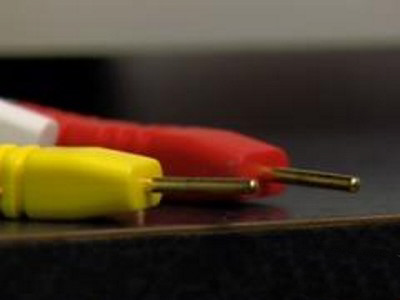 They began
testing
it a month ago. They say so far it's showing very positive results. Once a
day, patients use his machine to send electrical currents into their
bodies. "It's done through electrodes on the hands and feet, and it
stimulates acupuncture points and reflexology points, as well as free
nerve endings," said Dr. Rhodes. Dr. Rob Izor, who is the neurologist who
oversees the tests claims that all five of their patients have shown
progress. Doctors Izor and Rhodes say more research is needed before their
machine will be available to the public.
For more information go to
the
Complete article and VIDEO.
They began
testing
it a month ago. They say so far it's showing very positive results. Once a
day, patients use his machine to send electrical currents into their
bodies. "It's done through electrodes on the hands and feet, and it
stimulates acupuncture points and reflexology points, as well as free
nerve endings," said Dr. Rhodes. Dr. Rob Izor, who is the neurologist who
oversees the tests claims that all five of their patients have shown
progress. Doctors Izor and Rhodes say more research is needed before their
machine will be available to the public.
For more information go to
the
Complete article and VIDEO.
�
9th February 2008 - New research
THE MYSTERY OF RESTLESS LEGS SYNDROME
Neurology [2008] 70 (1) : 35-42 (Winkelman JW,
Shahar E, Sharief I, Gottlieb DJ.)�
Complete abstract
Restless Legs Syndrome is characterized by an
urge to move the legs. This urge can often be accompanied by pain or other
unpleasant sensations, and it either occurs or worsens with rest. It
becomes more likely at night, which is why� sleep disturbances are
the most frequent reason for patients seeking medical help for it. It
becomes
progressively
more common with age. Just like
Parkinson's Disease, dopaminergic drugs are the primary method of treating
it.
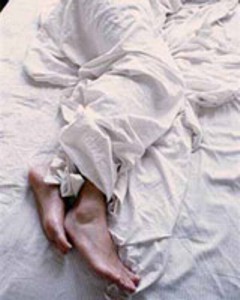 However, it is not purely a Parkinson's Disease symptom, as it often
occurs in people that don't have Parkinson's
Disease. The precise cause has never been
known. Researchers evaluated the association between Restless Legs
Syndrome and both cardiovascular disease and coronary heart disease. In a
large study, they found that Restless Legs Syndrome was far more common in
those people with either cardiovascular disease or coronary heart disease.
This association was stronger in those with severe Restless�legs Syndrome.
Given that anemia is also common in RLS, it appears that besides dopamine
deficiency, that reduced blood flow to the legs worsens Restless Legs
Syndrome. The precise reason why is still not known.
However, it is not purely a Parkinson's Disease symptom, as it often
occurs in people that don't have Parkinson's
Disease. The precise cause has never been
known. Researchers evaluated the association between Restless Legs
Syndrome and both cardiovascular disease and coronary heart disease. In a
large study, they found that Restless Legs Syndrome was far more common in
those people with either cardiovascular disease or coronary heart disease.
This association was stronger in those with severe Restless�legs Syndrome.
Given that anemia is also common in RLS, it appears that besides dopamine
deficiency, that reduced blood flow to the legs worsens Restless Legs
Syndrome. The precise reason why is still not known.
����������������������������������������������������������������������������������������������������������������������������������������������������������������������������������� 8th February 2008 - News report
Blood Pressure drugs Cut Risk Of Parkinson's
Disease
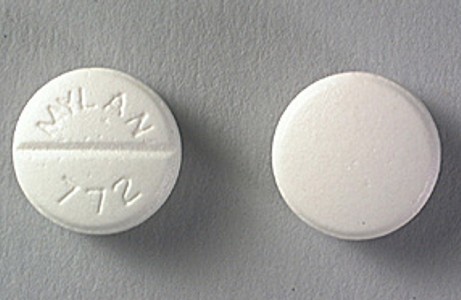 Long term use of calcium channel blockers, one of
several types of blood pressure lowering tablets in widespread use, cuts the
likelihood of developing Parkinson's Disease by 23%. There was no reduced
risk when using several other high blood
pressure drugs : ACE inhibitors, AT II antagonists and beta blockers.
Researchers have suggested more research is needed to determine why
calcium channel blockers such as verapamil and diltiazem help Parkinson's
disease, whether this is
a causal association, and why other high blood pressure medications do not
offer a reduced risk.
Long term use of calcium channel blockers, one of
several types of blood pressure lowering tablets in widespread use, cuts the
likelihood of developing Parkinson's Disease by 23%. There was no reduced
risk when using several other high blood
pressure drugs : ACE inhibitors, AT II antagonists and beta blockers.
Researchers have suggested more research is needed to determine why
calcium channel blockers such as verapamil and diltiazem help Parkinson's
disease, whether this is
a causal association, and why other high blood pressure medications do not
offer a reduced risk.
The Parkinson's Disease Society, said : "It is too early to
state with confidence whether calcium channel blockers can protect against
Parkinson's disease. Although people using calcium channel blockers in this
study had a lower incidence of Parkinson's we cannot determine whether these
drugs can prevent the condition."
For more information go to
the
Complete article.
�
��������������������������������������������������������������������������������������������������������������������������������������������������
�7th February 2008 - New research
HARMANE - A COMMON CAUSE OF TREMOR
Neurotoxicology [2007] Dec 27; [Epub ahead of
print] (Louis ED, Jiang W, Pellegrino KM, Rios E, Factor-Litvak P,
Henchcliffe C, Zheng W.)
Complete abstract
Harmane is a potent tremor-producing neurotoxin. In 2002, researchers
demonstrated elevated blood harmane concentrations in an initial sample of
100 cases of Essential Tremor. Between 2002 and 2007, the same researchers
assembled a new and larger sample of Essential Tremor cases in order to
prove their previous findings.� Levels of harmane in the blood were
confirmed to be much higher in those people with tremor. Harmane was
highly related to cases of Essential Tremor. This was even more so in
cases that were genetic, suggesting an inherited inclination to
high
harmane levels.
Harmane derives from
Harmal.
 In the U.S.A., Harmal was originally grown as an exotic plant.
However,
strong winds inadvertently mixed Harmal in with other crops.�Harmane and similar substances are
consequently also found in
wheat, rice, corn, barley, soybeans, rye,
grapes, mushrooms, vinegar, and plant-derived beverages (wine, beer,
whisky, brandy, and sake).
According to
previous research, harmane is also commonly contained in tobacco smoke,
which suggests that smoking could also cause tremor by increasing harmane levels.
For more information go to
the
Complete article.
In the U.S.A., Harmal was originally grown as an exotic plant.
However,
strong winds inadvertently mixed Harmal in with other crops.�Harmane and similar substances are
consequently also found in
wheat, rice, corn, barley, soybeans, rye,
grapes, mushrooms, vinegar, and plant-derived beverages (wine, beer,
whisky, brandy, and sake).
According to
previous research, harmane is also commonly contained in tobacco smoke,
which suggests that smoking could also cause tremor by increasing harmane levels.
For more information go to
the
Complete article.
�
5th February 2008 - News report
SEROTONIN RELIEVES L-DOPA SIDE EFFECTS
As Parkinson's Disease progresses, L-DOPA can
cause prominent side effects, such as dyskinesia, that counteract L-dopa's effectiveness.
Researchers have provided evidence that serotonin, a substance that the
brain produces primarily to cause sleep, as well as regulate mood, appetite,
and sexuality and
sleep, can also play a role in Parkinson's disease. Researchers have shown
using a model, that L-dopa side effects can be blocked by stimulating a
serotonin receptor.�
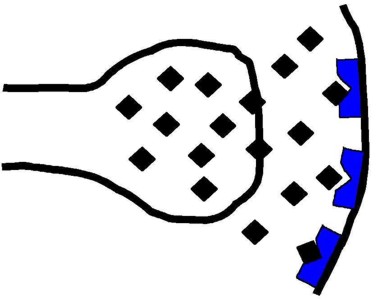 They used a molecule
they are calling CP94253, which mimics the action of serotonin.
Involuntary movements, as are seen in advanced Parkinson's Disease,
decreased when using it. The researchers believe that CP94253, and similar
serotonin 1B receptor agonists (synthetic substances that act like
serotonin), may counteract L-DOPA-induced behaviours by reducing the
release of GABA, a substance the brain produces to inhibit the transmission of
nerve impulses. The researchers suggest that this provides a rationale for
developing drugs that act like serotonin in order to treat the side
effects experienced in advanced Parkinson's Disease.�
For more information go to
the
Complete article.
They used a molecule
they are calling CP94253, which mimics the action of serotonin.
Involuntary movements, as are seen in advanced Parkinson's Disease,
decreased when using it. The researchers believe that CP94253, and similar
serotonin 1B receptor agonists (synthetic substances that act like
serotonin), may counteract L-DOPA-induced behaviours by reducing the
release of GABA, a substance the brain produces to inhibit the transmission of
nerve impulses. The researchers suggest that this provides a rationale for
developing drugs that act like serotonin in order to treat the side
effects experienced in advanced Parkinson's Disease.�
For more information go to
the
Complete article.
�
4th February 2008 - News report
SUPERCOMPUTERS USED TO DEVELOP PARKINSON'S DISEASE DRUGS
Proteins are long chains of amino acids, just
like pearl necklaces are long chains of pearls. Proteins regulate most of
the functions in the body.
Just as pearl necklaces can change shape
and position, so can proteins. It is only when a protein is in a certain
position that it has any effect on the cells of the body.� Supercomputers may now help obtain
precise geometric details of proteins, something that may be important for
determining exactly the shape and position of proteins when they interact with the various cells in the
body.�
 This has become possible due to the development of MAPAS (Membrane-Associated Protein
Assessments). Previously, choosing the structure of a specific drug that
would have effect on any biological function out of the many possibilities was largely a
matter of trial and error, because the precise structure of the drugs that
were needed was not
even known. Researchers at the San Diego Supercomputer Center (SDSC) and
UC San Diego say that this approach may now lead to the development of new
drugs for medical disorders such as Parkinson's Disease. According to the
researchers, this tool has already provided them with important
information regarding Parkinson's Disease.
For more information go to
the
Complete article.
This has become possible due to the development of MAPAS (Membrane-Associated Protein
Assessments). Previously, choosing the structure of a specific drug that
would have effect on any biological function out of the many possibilities was largely a
matter of trial and error, because the precise structure of the drugs that
were needed was not
even known. Researchers at the San Diego Supercomputer Center (SDSC) and
UC San Diego say that this approach may now lead to the development of new
drugs for medical disorders such as Parkinson's Disease. According to the
researchers, this tool has already provided them with important
information regarding Parkinson's Disease.
For more information go to
the
Complete article.
�
������������������������������������������������������������������������������������������������������������������������������������������������������
2nd February 2008 - New research
DYSTONIC TREMOR : DYSTONIA AND TREMOR WITHOUT A
LACK OF DOPAMINE
Movement Disorders [2007] 22 (15) : 2210-2215
(Schneider SA, Edwards MJ, Mir P, Cordivari C, Hooker J, Dickson J, Quinn
N, Bhatia KP.)
Complete abstract
A number of patients had tremor in their
arms, and reduced arm swing on the affected side, so Parkinson's Disease
was suspected. All of the patients also had dystonia, or at least
components of arm tremor that were compatible with dystonic tremor.
Despite it being considered that they had Parkinson's Disease, none of
them had developed akinesia (a loss of
movement) after nearly six years. In contradiction of the suggestion that
they might have Parkinson's Disease,
none of them had a lack of dopamine, which would be expected in
Parkinson's Disease.
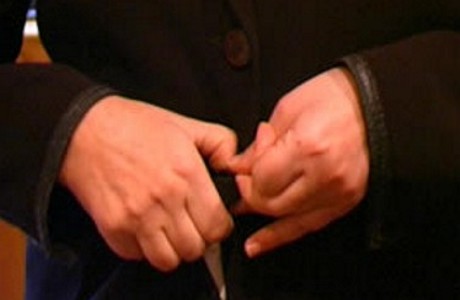 Given
that Parkinson's Disease is so frequently misdiagnosed, the researchers
suggest that clinicians should be
aware that dystonia can begin with arm tremor, impaired arm swing and
sometimes jaw tremor, but without akinesia. These are not necessarily
Parkinson's Disease symptoms even though these symptoms are often
experienced by people with Parkinson's Disease. Parkinson's Disease is
largely due to a lack of dopamine. However, dystonia is largely due to a
lack of GABA, an entirely different substance produced in the brain.
Given
that Parkinson's Disease is so frequently misdiagnosed, the researchers
suggest that clinicians should be
aware that dystonia can begin with arm tremor, impaired arm swing and
sometimes jaw tremor, but without akinesia. These are not necessarily
Parkinson's Disease symptoms even though these symptoms are often
experienced by people with Parkinson's Disease. Parkinson's Disease is
largely due to a lack of dopamine. However, dystonia is largely due to a
lack of GABA, an entirely different substance produced in the brain.
�
1st February 2008 - News report
Michael J. Fox Foundation FUNDS FOUR DIFFERENT
APPROACHES
The Michael J. Fox Foundation
has awarded funding for research projects using four very different approaches to
dealing with Parkinson's Disease. One of them will work to develop a
disease-modifying drug that could block the toxicity associated with clumping of
the protein alpha-synuclein, a substance that often appears in the cells of
people with Parkinson's Disease.
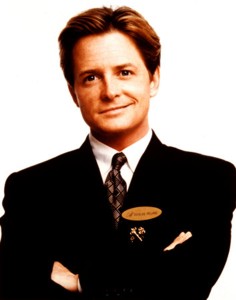 Another project will test compounds that
specifically target inflammation in
Parkinson's Disease to determine whether blocking
inflammation using certain drugs reverses loss of
activity of
dopamine-producing cells. The third project concerns a substance that
crosses the blood-brain barrier, and then increases levels of trophic factors,
which are specialized substances that potently promote survival of nerve cells. The
fourth project concerns the mitochondria which is the energy producing part of
cells.� It is widely believed that the function of the mitochondria is
reduced in Parkinson's Disease. Newly developed substances that improve
mitochondrial function will be assessed to se whether these substances help to
prevent cell damage. For more information go to
the
Complete article.
Another project will test compounds that
specifically target inflammation in
Parkinson's Disease to determine whether blocking
inflammation using certain drugs reverses loss of
activity of
dopamine-producing cells. The third project concerns a substance that
crosses the blood-brain barrier, and then increases levels of trophic factors,
which are specialized substances that potently promote survival of nerve cells. The
fourth project concerns the mitochondria which is the energy producing part of
cells.� It is widely believed that the function of the mitochondria is
reduced in Parkinson's Disease. Newly developed substances that improve
mitochondrial function will be assessed to se whether these substances help to
prevent cell damage. For more information go to
the
Complete article.
�
.gif)
.gif)
 Out of 128 patients,
a few reported serious side effects. Twenty-eight patients reported 41
adverse events. Twelve patients were withdrawn due to adverse effects
(either hallucinations, dyspnea, dizziness, or vascular problems). A
significant improvement in symptoms was found after changing over to
cabergoline. After 12 weeks, the mean dose of cabergoline was 3.2 mg. 25%
of the patients were taking it twice a day. It is not known whether the
improvement in symptoms was due to a placebo effect, the use of low doses
of dopamine agonists, or to the effect of cabergoline.
Out of 128 patients,
a few reported serious side effects. Twenty-eight patients reported 41
adverse events. Twelve patients were withdrawn due to adverse effects
(either hallucinations, dyspnea, dizziness, or vascular problems). A
significant improvement in symptoms was found after changing over to
cabergoline. After 12 weeks, the mean dose of cabergoline was 3.2 mg. 25%
of the patients were taking it twice a day. It is not known whether the
improvement in symptoms was due to a placebo effect, the use of low doses
of dopamine agonists, or to the effect of cabergoline.
 The
average
annual
incidence of Parkinson's Disease has been found to be 21.1 per 100,000
people. This means that people are
being diagnosed with Parkinson's Disease at a
faster rate in the Faeroe Islands than anywhere else in the world. The
prevalence, which is the number of people that already have Parkinson's
Disease is, at 206.7 per 100,000, also one of the highest in the world.�
This is greater than it was in previous years. Fishing forms most of the
Faeroes economy, and fish is very prominent in their diet. The cause of
the high prevalence is unknown, but it has been suggested that neurotoxic
contaminants in traditional food may play a role in the pathogenesis in
this population, perhaps jointly with genetic predisposition.
The
average
annual
incidence of Parkinson's Disease has been found to be 21.1 per 100,000
people. This means that people are
being diagnosed with Parkinson's Disease at a
faster rate in the Faeroe Islands than anywhere else in the world. The
prevalence, which is the number of people that already have Parkinson's
Disease is, at 206.7 per 100,000, also one of the highest in the world.�
This is greater than it was in previous years. Fishing forms most of the
Faeroes economy, and fish is very prominent in their diet. The cause of
the high prevalence is unknown, but it has been suggested that neurotoxic
contaminants in traditional food may play a role in the pathogenesis in
this population, perhaps jointly with genetic predisposition. The present
study was to investigate the efficacy and safety of the rotigotine transdermal
patch in the treatment of early Parkinson's disease. Its effect was
compared to the use of a placebo or ropinirole. Transdermal rotigotine at
doses less or equal to 8 mg/day were not inferior to ropinirole at doses
less or equal to 24 mg/day. Transdermal rotigotine at doses less or equal
to 8 mg/day had a similar efficacy to ropinirole at doses less or equal to
12 mg/day. The rotigotine transdermal patch was well tolerated. The most
common adverse events were reactions at the site of the application of the
patch, nausea, and somnolence. Reactions at the application site were
predominantly mild or moderate in intensity.
The present
study was to investigate the efficacy and safety of the rotigotine transdermal
patch in the treatment of early Parkinson's disease. Its effect was
compared to the use of a placebo or ropinirole. Transdermal rotigotine at
doses less or equal to 8 mg/day were not inferior to ropinirole at doses
less or equal to 24 mg/day. Transdermal rotigotine at doses less or equal
to 8 mg/day had a similar efficacy to ropinirole at doses less or equal to
12 mg/day. The rotigotine transdermal patch was well tolerated. The most
common adverse events were reactions at the site of the application of the
patch, nausea, and somnolence. Reactions at the application site were
predominantly mild or moderate in intensity.  Publisher's description : Parkinson's Disease
in Focus is a resource for pharmacists and other healthcare practitioners
who are involved with patients. It is aimed at being helpful to students
of pharmacy and medicine, and to patients and those who care for them. The
book provides a framework for medical practice, with a particular focus on
drug therapy management. Developments in research of new treatments such
as gene therapy are also discussed. Chapter contents include : The
condition and its symptoms, Pharmacotherapy, Non-drug treatments,
Complementary therapies, Surgical options, Symptom management not
specific to Parkinson's disease, Development and future treatments, drug interactions and adverse effects.
Publisher's description : Parkinson's Disease
in Focus is a resource for pharmacists and other healthcare practitioners
who are involved with patients. It is aimed at being helpful to students
of pharmacy and medicine, and to patients and those who care for them. The
book provides a framework for medical practice, with a particular focus on
drug therapy management. Developments in research of new treatments such
as gene therapy are also discussed. Chapter contents include : The
condition and its symptoms, Pharmacotherapy, Non-drug treatments,
Complementary therapies, Surgical options, Symptom management not
specific to Parkinson's disease, Development and future treatments, drug interactions and adverse effects.
 DBS is a surgical method that
DBS is a surgical method that
 FRAQ is a 28-item
self-administered survey that assesses the
knowledge and perception of risk factors for
falling.� 82% of the participants reported falls in the past.�
30% of participants had fallen within the past month. 68% of the
participants felt they were at risk for further falls. When asked to list
potential risk factors for falling, only 14% could identify medication as
a risk factor. People with Parkinson's Disease are at substantial risk of
falling, yet many appear to be unaware of common risk factors, especially
medication use.
FRAQ is a 28-item
self-administered survey that assesses the
knowledge and perception of risk factors for
falling.� 82% of the participants reported falls in the past.�
30% of participants had fallen within the past month. 68% of the
participants felt they were at risk for further falls. When asked to list
potential risk factors for falling, only 14% could identify medication as
a risk factor. People with Parkinson's Disease are at substantial risk of
falling, yet many appear to be unaware of common risk factors, especially
medication use. The incidence of dyskinesia after ten years was
still significantly lower in those taking
ropinirole.
The time taken to develop dyskinesia was
longer in those taking ropinirole.� The incidence of at least
moderate wearing off of effect was significantly lower in those taking
ropinirole. Over ten years there were no significant differences in change
in symptoms, scores concerning daily living or movement, or scores
concerning quality of life, clinical impression, or sleepiness.
The incidence of dyskinesia after ten years was
still significantly lower in those taking
ropinirole.
The time taken to develop dyskinesia was
longer in those taking ropinirole.� The incidence of at least
moderate wearing off of effect was significantly lower in those taking
ropinirole. Over ten years there were no significant differences in change
in symptoms, scores concerning daily living or movement, or scores
concerning quality of life, clinical impression, or sleepiness.
 Physicians reported that 34% of their Parkinson's Disease patients
experience dyskinesia, and that 20% of
patients with Parkinson's Disease were affected by
moderately-to-completely disabling dyskinesia. Treatment of dyskinesia was
looked upon by the physicians as unsatisfactory. Different methods of
treating dyskinesia are being examined. However, dividing up the L-dopa
dosage is presently the first choice means of treating dyskinesia.
Physicians reported that 34% of their Parkinson's Disease patients
experience dyskinesia, and that 20% of
patients with Parkinson's Disease were affected by
moderately-to-completely disabling dyskinesia. Treatment of dyskinesia was
looked upon by the physicians as unsatisfactory. Different methods of
treating dyskinesia are being examined. However, dividing up the L-dopa
dosage is presently the first choice means of treating dyskinesia. The study appears in the February 20 issue of the
open-access, online journal, PLoS ONE. Levels of MAO-B vary 50-fold in
humans and tend to increase with age. Several studies have suggested that
increases in MAO-B contribute to the development of Parkinson's Disease,
but direct proof of a contributory role for MAO-B has been lacking. Tests
to measure levels of MAO-B are not currently available to the general
public. Researchers suggest that MAO-B testing could be akin to current
practices involving cholesterol, but add that "the fact that someone has
high levels of MAO-B does not necessarily mean they are fated to develop
Parkinson's Disease." For more information go to
the
The study appears in the February 20 issue of the
open-access, online journal, PLoS ONE. Levels of MAO-B vary 50-fold in
humans and tend to increase with age. Several studies have suggested that
increases in MAO-B contribute to the development of Parkinson's Disease,
but direct proof of a contributory role for MAO-B has been lacking. Tests
to measure levels of MAO-B are not currently available to the general
public. Researchers suggest that MAO-B testing could be akin to current
practices involving cholesterol, but add that "the fact that someone has
high levels of MAO-B does not necessarily mean they are fated to develop
Parkinson's Disease." For more information go to
the
 Unable to manage oral secretions,
affected persons are at an increased risk of aspiration pneumonia, skin
maceration, and infection. NH004 is an intra-oral, slow-dissolving film
containing a fast acting anticholinergic agent to control the symptoms of
sialorrhea. The drug is embedded in a muco-adhesive film that is placed in
the mouth and provides a slow, localized delivery of the medication while
minimizing systemic exposure to the drug. The film design makes it
suitable for unobtrusive use in a social environment. For more information go to
the
Unable to manage oral secretions,
affected persons are at an increased risk of aspiration pneumonia, skin
maceration, and infection. NH004 is an intra-oral, slow-dissolving film
containing a fast acting anticholinergic agent to control the symptoms of
sialorrhea. The drug is embedded in a muco-adhesive film that is placed in
the mouth and provides a slow, localized delivery of the medication while
minimizing systemic exposure to the drug. The film design makes it
suitable for unobtrusive use in a social environment. For more information go to
the
 This
coincidence of medical disorders may be due to reduced dopamine being
common to both Parkinson's Disease and depression. However, about two
years after diagnosis, mental health problems actually tend to decline.
This is odd given that dopamine levels tend to decrease even further after
diagnosis. It might possibly be explained by the fact that most people
start taking dopamine increasing drugs. This increase in mental health
problems prior to and after diagnosis is greater for women than for men,
and also for younger rather than older individuals.
This
coincidence of medical disorders may be due to reduced dopamine being
common to both Parkinson's Disease and depression. However, about two
years after diagnosis, mental health problems actually tend to decline.
This is odd given that dopamine levels tend to decrease even further after
diagnosis. It might possibly be explained by the fact that most people
start taking dopamine increasing drugs. This increase in mental health
problems prior to and after diagnosis is greater for women than for men,
and also for younger rather than older individuals.
 It remained unknown
as to whether
Lewy
bodies under these circumstances were merely part of ageing, or indicated
that somebody was going to develop Parkinson's Disease. Researchers
findings suggest that Lewy bodies in healthy individuals (iLBD) is
preclinical Parkinson's Disease and that the lack of symptoms in these
people is solely due to the threshold for symptoms not quite being
reached. Along with other studies, this means that virtually all symptoms,
cellular and physical, are occurring and developing well before it is
realised that somebody has Parkinson's Disease, and that cell damage is
already taking place before diagnosis.
It remained unknown
as to whether
Lewy
bodies under these circumstances were merely part of ageing, or indicated
that somebody was going to develop Parkinson's Disease. Researchers
findings suggest that Lewy bodies in healthy individuals (iLBD) is
preclinical Parkinson's Disease and that the lack of symptoms in these
people is solely due to the threshold for symptoms not quite being
reached. Along with other studies, this means that virtually all symptoms,
cellular and physical, are occurring and developing well before it is
realised that somebody has Parkinson's Disease, and that cell damage is
already taking place before diagnosis. �Multi-centric study of stem cell application in these
disorders have proven the safety in all and efficacy in a select group of
patients, who otherwise have no other option for treatment�. However,
nobody undergoing stem cell surgery for Parkinson's Disease has ever been
cured of it. All patients undergoing stem cell surgery have returned home
with Parkinson's Disease and still have to be treated for Parkinson's
Disease.�What benefits some medical disorders is frequently not of any use
in others. For more information go to
the
�Multi-centric study of stem cell application in these
disorders have proven the safety in all and efficacy in a select group of
patients, who otherwise have no other option for treatment�. However,
nobody undergoing stem cell surgery for Parkinson's Disease has ever been
cured of it. All patients undergoing stem cell surgery have returned home
with Parkinson's Disease and still have to be treated for Parkinson's
Disease.�What benefits some medical disorders is frequently not of any use
in others. For more information go to
the
 They began
testing
it a month ago. They say so far it's showing very positive results. Once a
day, patients use his machine to send electrical currents into their
bodies. "It's done through electrodes on the hands and feet, and it
stimulates acupuncture points and reflexology points, as well as free
nerve endings," said Dr. Rhodes. Dr. Rob Izor, who is the neurologist who
oversees the tests claims that all five of their patients have shown
progress. Doctors Izor and Rhodes say more research is needed before their
machine will be available to the public.
For more information go to
the
They began
testing
it a month ago. They say so far it's showing very positive results. Once a
day, patients use his machine to send electrical currents into their
bodies. "It's done through electrodes on the hands and feet, and it
stimulates acupuncture points and reflexology points, as well as free
nerve endings," said Dr. Rhodes. Dr. Rob Izor, who is the neurologist who
oversees the tests claims that all five of their patients have shown
progress. Doctors Izor and Rhodes say more research is needed before their
machine will be available to the public.
For more information go to
the
 However, it is not purely a Parkinson's Disease symptom, as it often
occurs in people that don't have Parkinson's
Disease. The precise cause has never been
known. Researchers evaluated the association between Restless Legs
Syndrome and both cardiovascular disease and coronary heart disease. In a
large study, they found that Restless Legs Syndrome was far more common in
those people with either cardiovascular disease or coronary heart disease.
This association was stronger in those with severe Restless�legs Syndrome.
Given that anemia is also common in RLS, it appears that besides dopamine
deficiency, that reduced blood flow to the legs worsens Restless Legs
Syndrome. The precise reason why is still not known.
However, it is not purely a Parkinson's Disease symptom, as it often
occurs in people that don't have Parkinson's
Disease. The precise cause has never been
known. Researchers evaluated the association between Restless Legs
Syndrome and both cardiovascular disease and coronary heart disease. In a
large study, they found that Restless Legs Syndrome was far more common in
those people with either cardiovascular disease or coronary heart disease.
This association was stronger in those with severe Restless�legs Syndrome.
Given that anemia is also common in RLS, it appears that besides dopamine
deficiency, that reduced blood flow to the legs worsens Restless Legs
Syndrome. The precise reason why is still not known.  Long term use of calcium channel blockers, one of
several types of blood pressure lowering tablets in widespread use, cuts the
likelihood of developing Parkinson's Disease by 23%. There was no reduced
risk when using several other high blood
pressure drugs : ACE inhibitors, AT II antagonists and beta blockers.
Researchers have suggested more research is needed to determine why
calcium channel blockers such as verapamil and diltiazem help Parkinson's
disease, whether this is
a causal association, and why other high blood pressure medications do not
offer a reduced risk.
Long term use of calcium channel blockers, one of
several types of blood pressure lowering tablets in widespread use, cuts the
likelihood of developing Parkinson's Disease by 23%. There was no reduced
risk when using several other high blood
pressure drugs : ACE inhibitors, AT II antagonists and beta blockers.
Researchers have suggested more research is needed to determine why
calcium channel blockers such as verapamil and diltiazem help Parkinson's
disease, whether this is
a causal association, and why other high blood pressure medications do not
offer a reduced risk.  In the U.S.A., Harmal was originally grown as an exotic plant.
In the U.S.A., Harmal was originally grown as an exotic plant.  They used a molecule
they are calling CP94253, which mimics the action of serotonin.
Involuntary movements, as are seen in advanced Parkinson's Disease,
decreased when using it. The researchers believe that CP94253, and similar
serotonin 1B receptor agonists (synthetic substances that act like
serotonin), may counteract L-DOPA-induced behaviours by reducing the
release of GABA, a substance the brain produces to inhibit the transmission of
nerve impulses. The researchers suggest that this provides a rationale for
developing drugs that act like serotonin in order to treat the side
effects experienced in advanced Parkinson's Disease.�
For more information go to
the
They used a molecule
they are calling CP94253, which mimics the action of serotonin.
Involuntary movements, as are seen in advanced Parkinson's Disease,
decreased when using it. The researchers believe that CP94253, and similar
serotonin 1B receptor agonists (synthetic substances that act like
serotonin), may counteract L-DOPA-induced behaviours by reducing the
release of GABA, a substance the brain produces to inhibit the transmission of
nerve impulses. The researchers suggest that this provides a rationale for
developing drugs that act like serotonin in order to treat the side
effects experienced in advanced Parkinson's Disease.�
For more information go to
the
 This has become possible due to the development of MAPAS (Membrane-Associated Protein
Assessments). Previously, choosing the structure of a specific drug that
would have effect on any biological function out of the many possibilities was largely a
matter of trial and error, because the precise structure of the drugs that
were needed was not
even known. Researchers at the San Diego Supercomputer Center (SDSC) and
UC San Diego say that this approach may now lead to the development of new
drugs for medical disorders such as Parkinson's Disease. According to the
researchers, this tool has already provided them with important
information regarding Parkinson's Disease.
For more information go to
the
This has become possible due to the development of MAPAS (Membrane-Associated Protein
Assessments). Previously, choosing the structure of a specific drug that
would have effect on any biological function out of the many possibilities was largely a
matter of trial and error, because the precise structure of the drugs that
were needed was not
even known. Researchers at the San Diego Supercomputer Center (SDSC) and
UC San Diego say that this approach may now lead to the development of new
drugs for medical disorders such as Parkinson's Disease. According to the
researchers, this tool has already provided them with important
information regarding Parkinson's Disease.
For more information go to
the
 Given
that Parkinson's Disease is so frequently misdiagnosed, the researchers
suggest that clinicians should be
aware that dystonia can begin with arm tremor, impaired arm swing and
sometimes jaw tremor, but without akinesia. These are not necessarily
Parkinson's Disease symptoms even though these symptoms are often
experienced by people with Parkinson's Disease. Parkinson's Disease is
largely due to a lack of dopamine. However, dystonia is largely due to a
lack of GABA, an entirely different substance produced in the brain.
Given
that Parkinson's Disease is so frequently misdiagnosed, the researchers
suggest that clinicians should be
aware that dystonia can begin with arm tremor, impaired arm swing and
sometimes jaw tremor, but without akinesia. These are not necessarily
Parkinson's Disease symptoms even though these symptoms are often
experienced by people with Parkinson's Disease. Parkinson's Disease is
largely due to a lack of dopamine. However, dystonia is largely due to a
lack of GABA, an entirely different substance produced in the brain. Another project will test compounds that
specifically target inflammation in
Parkinson's Disease to determine whether blocking
inflammation using certain drugs reverses loss of
activity of
dopamine-producing cells. The third project concerns a substance that
crosses the blood-brain barrier, and then increases levels of trophic factors,
which are specialized substances that potently promote survival of nerve cells. The
fourth project concerns the mitochondria which is the energy producing part of
cells.� It is widely believed that the function of the mitochondria is
reduced in Parkinson's Disease. Newly developed substances that improve
mitochondrial function will be assessed to se whether these substances help to
prevent cell damage. For more information go to
the
Another project will test compounds that
specifically target inflammation in
Parkinson's Disease to determine whether blocking
inflammation using certain drugs reverses loss of
activity of
dopamine-producing cells. The third project concerns a substance that
crosses the blood-brain barrier, and then increases levels of trophic factors,
which are specialized substances that potently promote survival of nerve cells. The
fourth project concerns the mitochondria which is the energy producing part of
cells.� It is widely believed that the function of the mitochondria is
reduced in Parkinson's Disease. Newly developed substances that improve
mitochondrial function will be assessed to se whether these substances help to
prevent cell damage. For more information go to
the